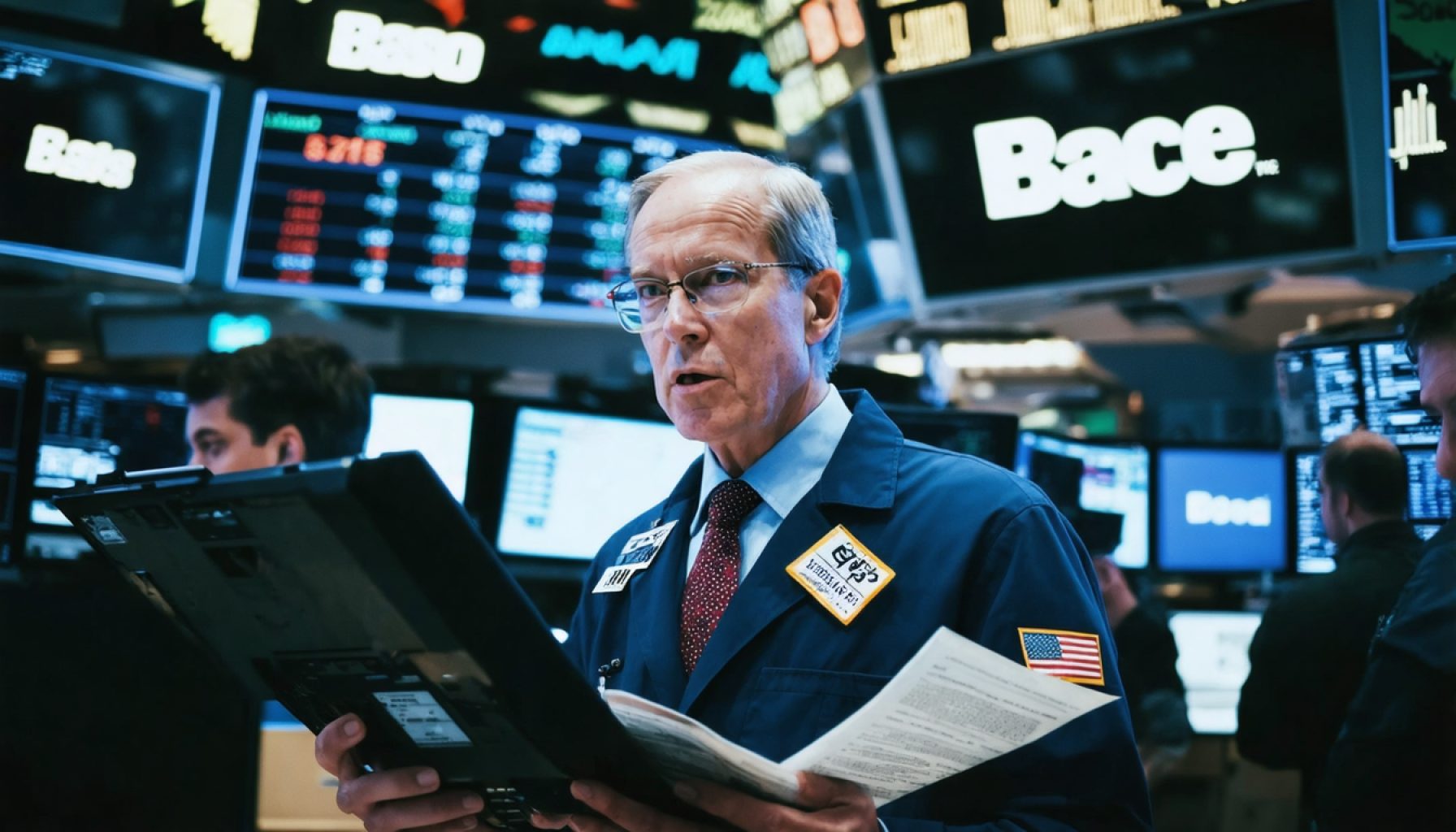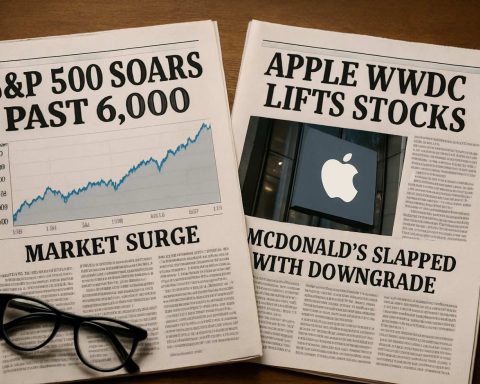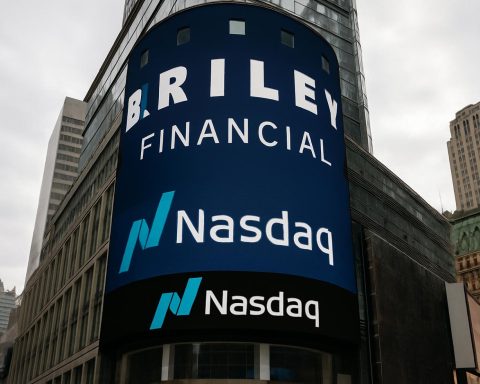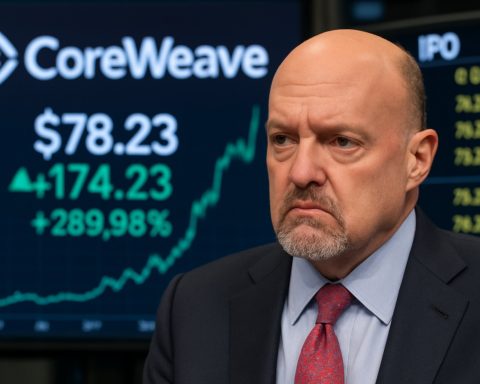- The Dow Jones Industrial Average and S&P 500 faced declines, with the Nasdaq in correction territory, reflecting tech sector volatility.
- The Bureau of Labor Statistics reported a shortfall in job growth for February, with 151,000 new jobs versus the expected 160,000, and a slight rise in unemployment to 4.1%.
- Investors anxiously await insights from Fed Chair Jerome Powell’s speech for clues on economic direction amid uncertainty.
- President Trump’s temporary easing of tariffs on Mexican and Canadian goods provided relief to US automakers, exemplifying strategic policy maneuvers.
- The market’s recent fluctuations highlight the significant impact of economic indicators and policy shifts, urging vigilance and adaptability among investors.
A tension-laden Friday on Wall Street painted a vivid picture of uncertainty as investors navigated a labyrinth of economic indicators and policy shifts. The Dow Jones Industrial Average teetered with a 0.4% dip, shadowed by the S&P 500’s similar 0.3% decline, while the Nasdaq tread in correction territory, highlighting a tech sector grappling with volatility.
Against this backdrop, the Bureau of Labor Statistics set the stage with their latest employment numbers: February yielded a mere 151,000 new jobs, falling short of the anticipated 160,000. The slight uptick in the unemployment rate to 4.1% added another layer to the complex narrative. Investors, hawk-eyed, looked toward Fed Chair Jerome Powell’s upcoming speech as a potential beacon for clarity. Here lay the prospect of gleaning the Fed’s reading of the economy’s pulse amid these erratic beats.
The week had already been a whirlwind. President Trump had announced an easing on some imported goods from Mexico and Canada, a move calculated to soften the blow of tariff policies that threatened to escalate economic tensions. For the Big Three US automakers, Wednesday’s announcement of temporary tariff relief had been a rare reprieve, a strategic pause as cross-border trade debates roiled.
Such economic acrobatics reflected a broader strategy from the Trump administration, rigid in its commitment to trimming government sizes while wielding tariffs as economic leverage. As the week concluded, investors were left at the crossroads, deciphering the immediate impact of these policy changes on future growth prospects.
Key takeaway for investors and observers alike: the market’s recent oscillations signal more than just short-term jitters; they are symptomatic of deeper, wider-reaching policy dynamics. This complex interplay between economic indicators and policy decisions demands vigilance and adaptability from all market participants. As we decode these movements, the crucial question remains—can the delicate balance between policy action and market stability be maintained? Stay tuned.
Unveiling the Financial Labyrinth: Navigating Wall Street’s Uncertain Waters
Wall Street’s Tension-Filled Week: An In-Depth Analysis
The recent tumult on Wall Street paints a vivid picture of economic uncertainty, as investors try to navigate a complex web of indicators and policy shifts. The Dow Jones Industrial Average’s 0.4% dip, coupled with similar drops in the S&P 500 and the Nasdaq’s wading into correction territory, underscores the volatility particularly notable in the tech sector.
Key Economic Indicators and Market Reactions
– Employment Numbers: The Bureau of Labor Statistics reported 151,000 new jobs in February, missing the forecasted 160,000. The unemployment rate slightly increased to 4.1%, adding another layer of complexity to the economic narrative.
– Federal Reserve Insights: Investors eagerly anticipate Fed Chair Jerome Powell’s upcoming speech, expecting guidance on the economy’s direction amidst these fluctuations. Powell’s insights are critical, as market participants seek clarity on potential monetary policy adjustments.
Policy Shifts and Their Implications
– Trade and Tariffs: President Trump’s recent announcement easing tariffs on some goods from Mexico and Canada offers temporary relief for US automakers amidst ongoing trade negotiations. This maneuver reflects the administration’s strategy of leveraging tariffs while aiming to reduce government size, though questions remain about long-term effects on trade relations.
– Market Resilience: The market reactions to these policy shifts signal underlying uncertainties. These oscillations are not mere short-term jitters but reflect deeper policy dynamics that require investors to stay vigilant and adaptable.
Examining the Current Trends and Forecasts
– Tech Sector Volatility: The Nasdaq’s correction territory status highlights tech sector fluctuations. While innovation drives tech growth, regulatory pressures and shifts in global trade policies pose challenges.
– Trade Relations and Global Impact: Temporary relief for automakers points to the broader implications of trade policies. Cross-border trade tensions, particularly with key partners, could influence global supply chains and economic stability.
Navigating Wall Street: Tips for Investors
1. Stay Informed: Regularly follow releases from the Bureau of Labor Statistics and Federal Reserve announcements to gauge economic health.
2. Diversify Portfolios: Protect against sector-specific volatility, particularly in tech, by diversifying investments.
3. Monitor Trade Policies: Pay attention to international trade developments which significantly impact market dynamics and long-term growth prospects.
4. Adapt and React: Flexibility in investment strategies is crucial during periods of economic uncertainty to capitalize on volatile markets.
Conclusion: Maintaining Balance
The interplay between economic indicators and policy decisions remains intricate. Investors must maintain a keen awareness of market conditions and policy changes to effectively navigate Wall Street’s challenges. Maintaining this balance is essential for ensuring long-term market stability amid ongoing uncertainties.
For more insights and updates, visit the Wall Street Journal and Bloomberg websites.










